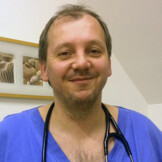Atrial and ventricular septal defect

A defect in the atrial and ventricular septum is a heart defect and a disease of the atrial or ventricular septum that causes communication between the right and left hearts so that oxygenated and deoxygenated blood mix. It is a congenital heart defect, whereby mixed oxygenated and deoxygenated blood is distributed throughout the body, which can cause major problems. Very often such defects appear in childhood, but it also depends on the size of the defect, sometimes they appear in adulthood.
Most common symptoms
- Malaise
- Sweating
- Spirituality
- Increased body temperature
- Nausea
- Blue leather
- Indigestion
- Low blood pressure
- Lung Island
- Swelling of the limbs
- The Island
- Stubby fingers
- Muscle weakness
- Fatigue
- Heart enlargement
Characteristics
A ventricular septal defect can also be congenital but sometimes acquired, and is a more serious problem that usually occurs as a child. In childhood, it can arise due to the mother's problems in pregnancy, in adulthood, for example, as a result of myocardial infarction. This defect tends to close spontaneously in the case of a small crack, and this defect also causes a left-right short circuit and is usually accompanied by heart rhythm and respiratory disorders.
Causes
This heart disease is caused, for example, by a congenital heart defect, in children, for example, if mothers drank excessive alcohol during pregnancy, or the defects may be part of other heart defects when there are also disorders of valve size and shape and the like. Sometimes the disease is accompanied by genetic defects such as Dawn's syndrome. In adulthood, the cause of the defect may be, for example, myocardial infarction or environmental influences, such as smoking, alcoholism, or obesity.
Symptoms
There is also a mixture of deoxygenated and oxygenated blood and it travels all over the body or to the lungs (depending on the pressure) for further oxygenation, which creates a lack of oxygen in the body and this is manifested by bluing. One also has problems with an irregular heartbeat, the so-called cardiac arrhythmia. Fatigue is also excessive, and in children with this heart defect, general failure to thrive is typical, when they find it difficult to gain weight and become stronger.
Diagnostics
The disease must be diagnosed on the basis of a physical examination, which detects cardiac arrhythmias, shortness of breath, or other external symptoms, but also on the basis of measurement and examination of the heart. Echocardiography is performed, which is an ultrasound examination of the heart, but also a chest X-ray in order to obtain an image of the lungs and heart and an ECG. The saturation of the arterial blood with oxygen, or the total flow and the size of the defect are also measured. Magnetic resonance imaging may also be part of the examination.
Course
Some minor defects of the atrial and ventricular septum may be asymptotic, i.e. without symptoms, or the symptoms may be very mild. In the case of a heart defect of the valves, it usually manifests itself in young children or in preschool age, especially with heart arrhythmias and respiratory problems. In adulthood, the course may be insignificant for a long time, but suddenly a problem or short circuit may appear. Exhaustive breathing and any other more demanding physical activity is then typical.










